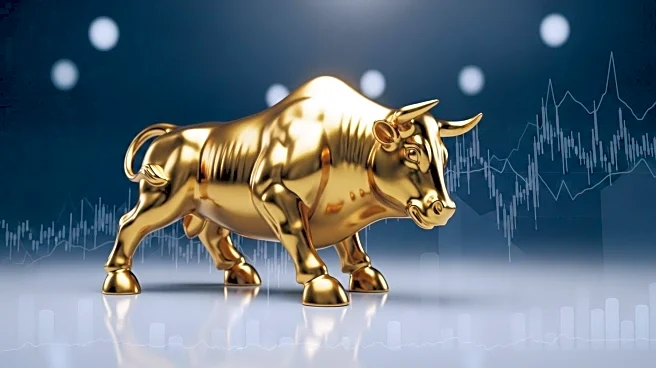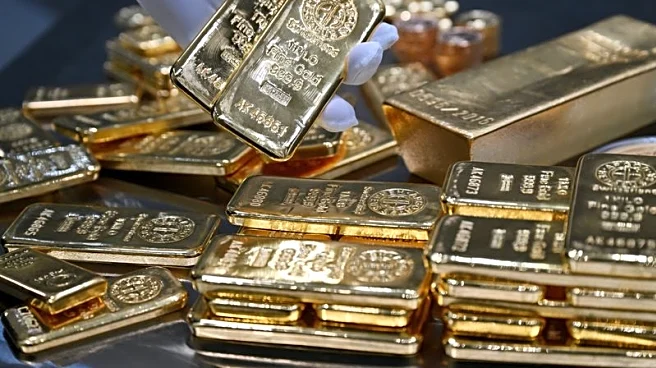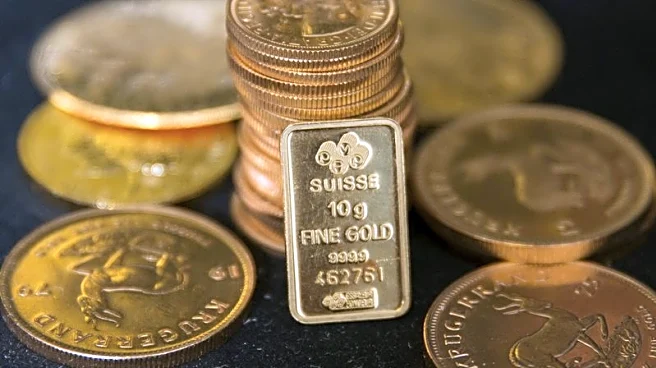What is the story about?
What's Happening?
Gold has reached record highs, surging nearly 12% in September to an all-time high of $3,859 per ounce, marking a 47.04% increase year-to-date. This rise is attributed to waning confidence in fiscal and monetary policy, leading investors to seek tangible stores of value like gold. The steepening yield curve reflects lost trust in central banks, with long-term bond yields rising. Central banks continue to buy gold, underscoring its status as a trusted reserve asset amid concerns over debt and currency debasement.
Why It's Important?
The surge in gold prices indicates a shift in investor sentiment towards non-fiat assets, driven by concerns over fiscal and monetary policy credibility. This trend could impact the U.S. economy by influencing investment strategies and asset allocation. The rising demand for gold as a hedge against currency debasement highlights the potential vulnerabilities in the current economic system, particularly in the face of high debt levels and fiscal deficits.
What's Next?
The Federal Reserve's expected rate cuts below the neutral rate could further boost inflation expectations and weaken the U.S. dollar, potentially driving gold prices higher. Investors may continue to seek gold as a safe haven, while central banks might increase their gold reserves to mitigate currency risks.
Beyond the Headlines
The increasing reliance on gold as a store of value raises questions about the long-term sustainability of fiat currencies and the potential for financial repression. It also reflects broader geopolitical and economic shifts, including de-globalization and changing capital flows.
AI Generated Content
Do you find this article useful?














